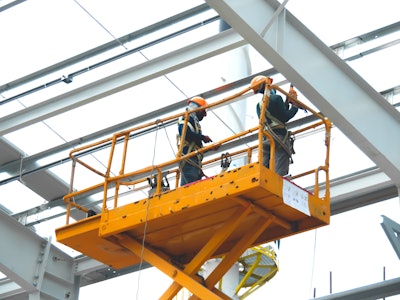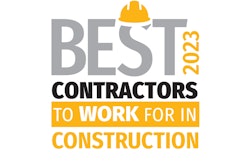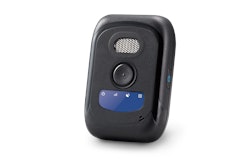
It’s no surprise working in construction is dangerous and potentially fatal. High falls and electrocution to being struck by objects or stuck in between are just a few of the most common fatal accidents construction workers can get into. But while construction workers may typically have protective gear and their cell phones handy, it’s not necessarily the most efficient way to keep them safe or have a good tool to use in an emergency.
Depending on the job and what scenario they find themselves in, construction workers may not always have the ability to call 911 in an emergency. Or if they fall or a struck by an object, workers may be unconscious. This common scenario makes it impossible for the workers to use a cell phone and reach for help.
According to the Pew Research Center, approximately 95 percent of Americans now own a cell phone of some type, and more than one-third own a smartphone. Although these devices may provide many conveniences to users, in emergency situations their use is limited. Cellular devices require the user to still be conscious, or within range of the phone to call for help, making the device un-reliable for construction workers and not the most plausible option for ensuring workers stay safe. There are many situations where construction workers wouldn’t be able to pull out their phone and call for help.
Emergency Communications on the Jobsite
But there’s a better solution to providing emergency communication for workers that can be easily carried or worn. The specific devices we are talking about is Mobile Personal Emergency Response Safety (mPERS) devices, which can automatically report an incident to emergency services so workers can receive help as soon as possible. mPERS devices, which have been used by seniors for years, are essentially a help button that can be pressed to alert emergency services that a worker needs help. In recent years, these devices have become even more beneficial outside of the senior space because they no longer require a base station device to place calls, which limited their range of use.
mPERS devices are small, portable, and lightweight. They use up-to-date location technology, and some even offer built-in fall advisory capabilities. These devices can detect horizontal and vertical movement and can initiate a call for help to emergency services without the need to even press a button. This is perfect in situations where construction workers may be unresponsive because of an accident or medical emergency, eliminating the need to call for help themselves entirely. The cloud-based technologies found in mPERS devices make it possible for Central Stations to pick up and response to the need for help as soon as possible. If a worker falls on the job, the device can report it via a text message or red flag in a software system. This can not only help emergency services identify where workers are, but can help other employees locate and help other construction workers.
The devices can also last much longer on one charge than a normal cell phone, making this another benefit of a mPERS device being used by construction workers. By having less functions, no screen, apps, or texting ability to drain battery, you aren’t constantly on them doing something.
Some of their features include:
- They can be turned off, but many also come with a “sleep” mode, where once the SOS button is pressed, the exact location information of the worker is sent to a central reporting station where an emergency call can be placed. There are mPERS devices on the market that can last up to 30 days on a single charge.
- The use of mPERS devices can also make it easier to keep track of the number of incidences that occur, where they occur, and the type of accident that occurs. This is valuable information that can help employers verify where safety measures and tactics needed to be updated, and can help workers avoid repeat accidents.
But not just any mPERS device can satisfy all the needs of all construction workers that will be utilizing this device. Several things should be considered before selecting a device. One of the most important considerations is looking into mPERS devices that are capable of 5G technology. By the end of this year, all major cell phone networks will fully transition to 5G technology, making out-of-date devices that can only handle 3G or 4G useless. Another consideration is the ability to upgrade an mPERS device down the line if it becomes necessary with new data networks and technologies evolving every day.
Whether it’s a pendant, clipped to the pocket or belt, etc., picking a wearable device (mPERS device) that makes the most sense for construction workers’ specific needs is an important part of taking advantage of all of the safety benefits that can potentially help save lives and improve the health of construction workers. This simple change can make a lifetime of a difference in the response time of help that construction workers need to receive in a crisis.
Personal Protective Equipment (PPE) has moved beyond hard hats, goggles, gloves, vest and steel toe capped boots. While these are all vital pieces of equipment for construction workers to use, they can’t prevent and protect against everything.
mPERS devices are another great addition to construction worker PPE that doesn’t take up space, is easy to use, and can even work on its own without a user doing anything. Construction workers, and companies, should seriously consider and look into employing these devices as a standard across their practice. Instead of being stranded or calling out for help, a worker can receive connection to emergency services within seconds and in turn, prevent a bad situation from becoming worse by just the push of a button.



















